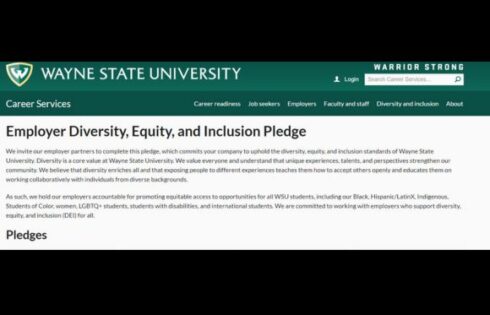
Will Moravits | Minding the Campus
Ask the average American about the state of public education, and you’re likely to hear complaints ranging from low scores, poorly paid teachers, drugs, gang violence, lack of funding, threats from school shootings, claims of indoctrination—from both sides of the political spectrum—and a myriad of other complaints.
Ask teachers and parents, and you’ll likely get similar answers. Reformers point to European schools, especially the Nordic countries such as Finland, and schools in China and Japan as the ideal systems, pointing out that in these places, students excel over Americans in all subjects, most importantly in the STEM fields, which will undoubtedly be the most valued in a 21st-century world. Politicians, while they may disagree about why American education lags, tend to agree with these assessments. But is it true? And if so, how do we fix it?
To answer the first question, we must compare data across similar groups, not from one country to another. According to the Economic Policy Institute (EPI), if we compare the performance of American students as a whole to those of other countries, we do, in fact, lag in very serious ways.
However, a closer look at the data reveals some telling information and highlights why we need to compare apples to apples to get to the root of the problem. The EPI reports, in part, that If U.S. adolescents had a social class distribution similar to that of frequently compared countries, the average reading scores in the United States would surpass those of similar post-industrial nations like France, Germany, and the United Kingdom. Additionally, the average math scores in the U.S. would be comparable to those in these countries.
This adjustment would enhance the U.S.’s international ranking among OECD countries, raising its average score to sixth in reading and 13th in math. Current PISA-based rankings, which do not account for social class composition or sampling errors and do not consider whether score differences are meaningful, place the U.S. at 14th in reading and 25th in math.
While comparing student groups improves the rankings of American students, it still reveals a gap between American students and those of the top-performing countries such as Finland, Canada, and Korea. What accounts for these gaps? Perhaps looking at the high-performing section of public education can help us glean a clearer picture of the problem:
On the National Assessment of Educational Progress, a federal exam that is considered the gold standard for comparing states and large districts, the Defense Department’s schools outscored every jurisdiction in math and reading last year and managed to avoid widespread pandemic losses.
Black and Hispanic students attending Department of Defense (DOD) schools outperformed their other public-school counterparts and white students who attend other non-DoD public schools. DoD students from households with parents who only had a high school education—indicating a lower level of income—outperformed kids from college-educated households in public schools outside the DoD. In short, the DoD seems to have the answer to the best form of public education.
So, what is their secret?
The easy answer would be higher funding. It makes sense. The DoD spends about $25,000 per student, far more than most states and on par with states such as New York. Its teachers are typically paid better and have more experience. However, funding isn’t the only reason. In fact, I would argue that it’s not nearly as important as other factors.
In DoD schools, no student lacks housing, and all students have at least one parent or guardian in the home—the majority have two. School safety isn’t a big concern, as DoD schools are located on military bases where security is already paramount, and crime is much lower than in metropolitan cities. While DoD schools aren’t perfect, they exude characteristics that correlate with high student achievement. Namely, two-parent households, income security, housing security, and parents who are present in the lives of their students.
These factors overwhelmingly lead to high student outcomes. Most notably are two-parent households. When looking at educational achievement and income levels among American households, we find that Asian Americans are at the top, followed by whites, Hispanics, and then blacks. Looking at the rates of children raised in two-parent households, blacks are at the bottom, followed by Hispanics, whites, and finally, Asian Americans.
These outcomes aren’t a coincidence. As President Obama once stated, “[C]hildren who grow up without a father are five times more likely to live in poverty and commit crime; nine times more likely to drop out of schools and 20 times more likely to end up in prison. They are more likely to have behavioral problems, run away from home, or become teenage parents themselves. And the foundations of our community are weaker because of it.”
One of the main reasons why I believe funding isn’t the crux of the issue is because, for five years, I taught college-level political science courses at Steele High School in Cibolo, TX. At the time, Steele had a student body of over 2,600 students, 52.5 percent of whom were DoD-connected.
Steele constantly outperformed other high schools in all areas of academic evaluation despite the funding being on par with neighboring districts. Among the students I taught, there were stark differences between the DoD-connected kids and those who were not.
In addition to the aforementioned advantages of DoD schools, my DoD students were much more racially diverse yet did not view race in the same manner that larger society does. As one black senior student told me, she was raised around people of all colors and didn’t view her race as a detriment or obstacle to her success. While anecdotal, among my non-DoD connected minority students, that belief was far less common.
How do we replicate these conditions in our public schools?
The answer to this question is far more difficult. There is only so much that government policy can—or should—do regarding the family. I don’t know if there are any short-term solutions, but I can offer long-term ones: Public policy needs to reemphasize the importance of the nuclear family.
Encourage marriage and discourage divorce. Encourage two-parent households, especially ones with a mother and father, where emotional, educational, and financial outcomes are shown to be the highest. Promote civic duty and societal unity in schools. Promote morality in public schools the way our country did for the first two hundred years of its existence.
Changing the culture of the American family is the only real solution to solving the problems that permeate the public school system.
Originally published on June 19, 2024 by Minding the Campus
MORE: Children need ‘liberation’ from parents, scholar says
IMAGE: Hogan Imaging/Shutterstock
Like The College Fix on Facebook / Follow us on Twitter




Add to the Discussion